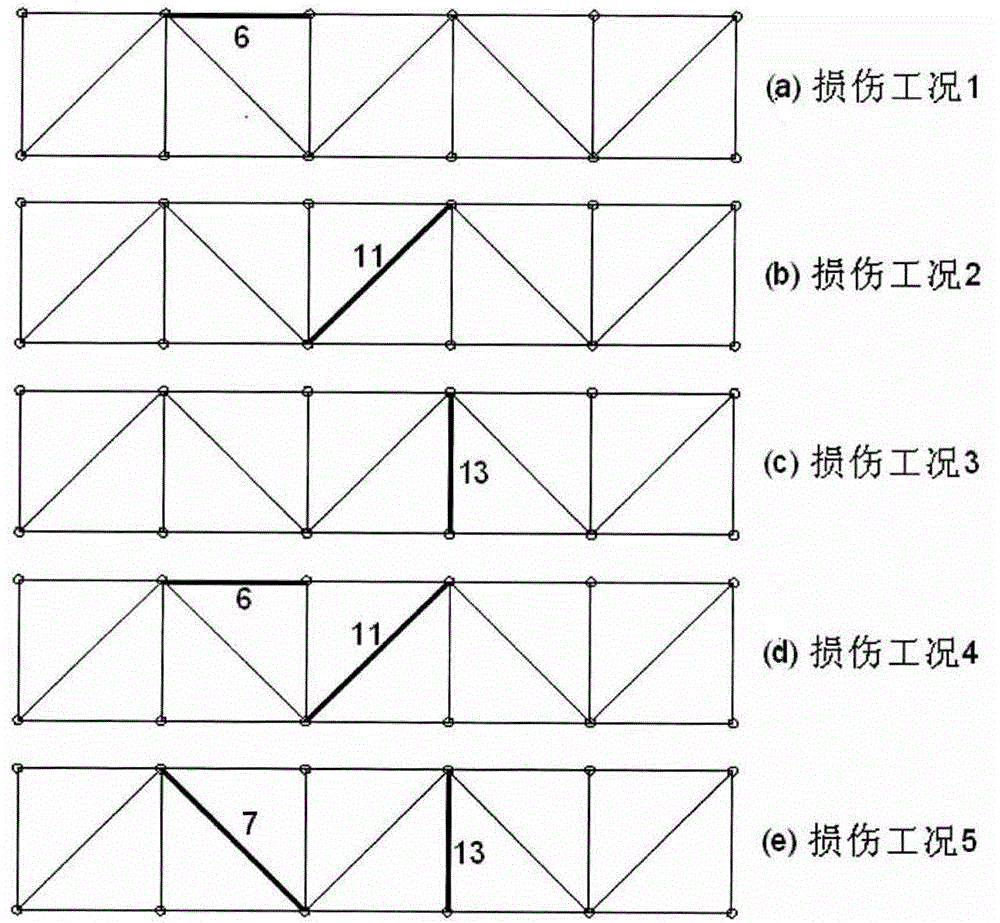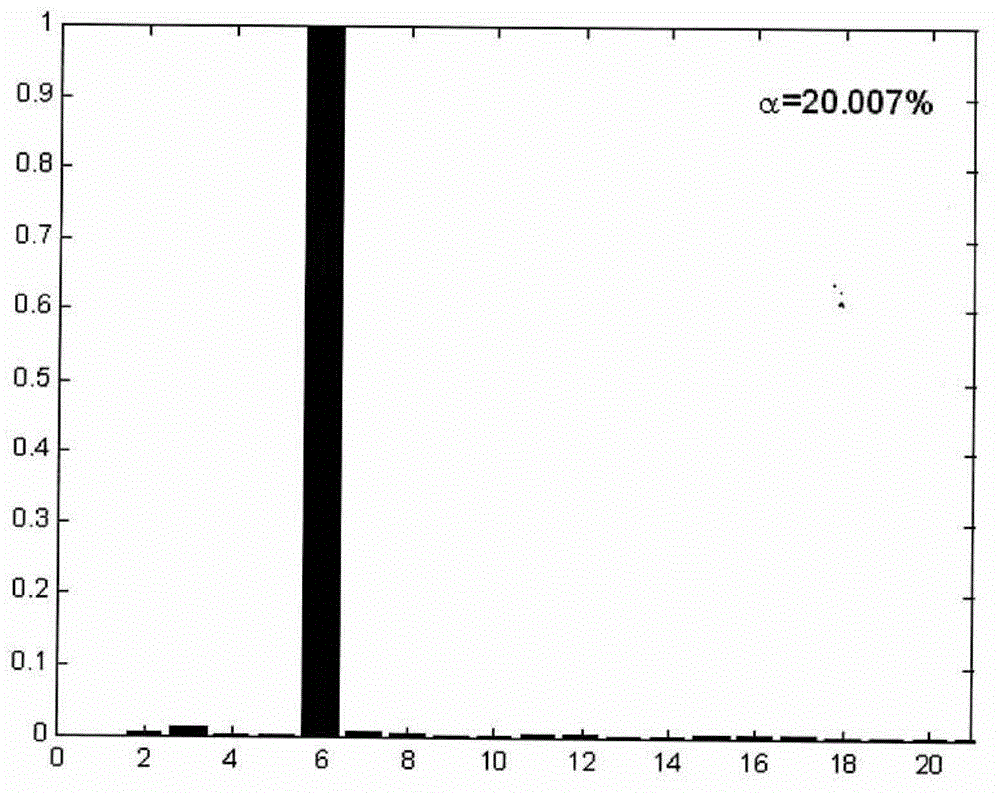Structural damage location and damage assessment method based on frequency variation
A technology of damage degree and frequency change, which is applied to the analysis of solids using sound waves/ultrasonic waves/infrasonic waves, and can solve problems such as difficult measurement of degree of freedom information, incomplete structural modal parameters, and difficulty in obtaining high-order modal information.
- Summary
- Abstract
- Description
- Claims
- Application Information
AI Technical Summary
Problems solved by technology
Method used
Image
Examples
Embodiment Construction
[0078] Such as figure 1 , figure 2 Shown, the present invention adopts following steps:
[0079] The first step: establish the finite element model of the undamaged structure as the reference finite element model;
[0080] Step 2: Vibration test the damaged structure and identify the m-order modal frequency of the damaged structure ω i * ( i = 1 , . . . , m ) ;
[0081] The third step: assess the damage degree of the damaged structure;
[0082] Step 4: Determining the damage location of the damaged structure.
[0083] The specific algorithm of the above steps is deduced as follows:
[0084] 1. The reference finite element model is represented by K and M, that is, the stiffness matrix and mass matrix of the undamaged structure, and its eigenvalues are exp...
PUM
 Login to View More
Login to View More Abstract
Description
Claims
Application Information
 Login to View More
Login to View More - Generate Ideas
- Intellectual Property
- Life Sciences
- Materials
- Tech Scout
- Unparalleled Data Quality
- Higher Quality Content
- 60% Fewer Hallucinations
Browse by: Latest US Patents, China's latest patents, Technical Efficacy Thesaurus, Application Domain, Technology Topic, Popular Technical Reports.
© 2025 PatSnap. All rights reserved.Legal|Privacy policy|Modern Slavery Act Transparency Statement|Sitemap|About US| Contact US: help@patsnap.com



